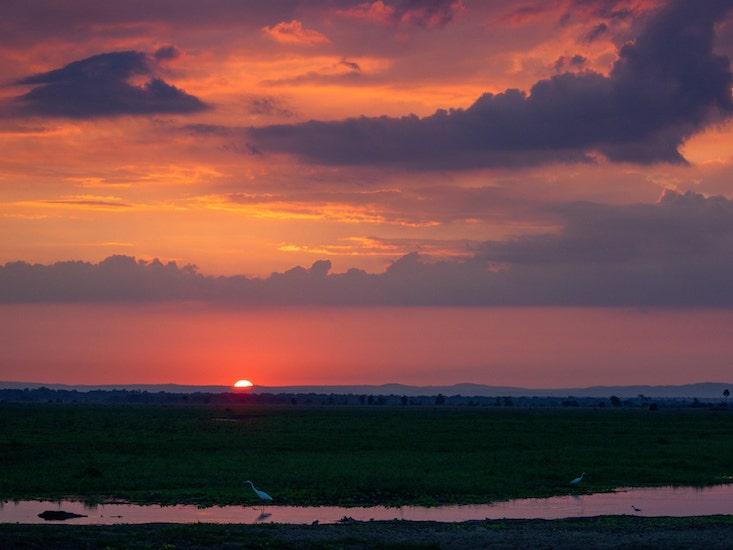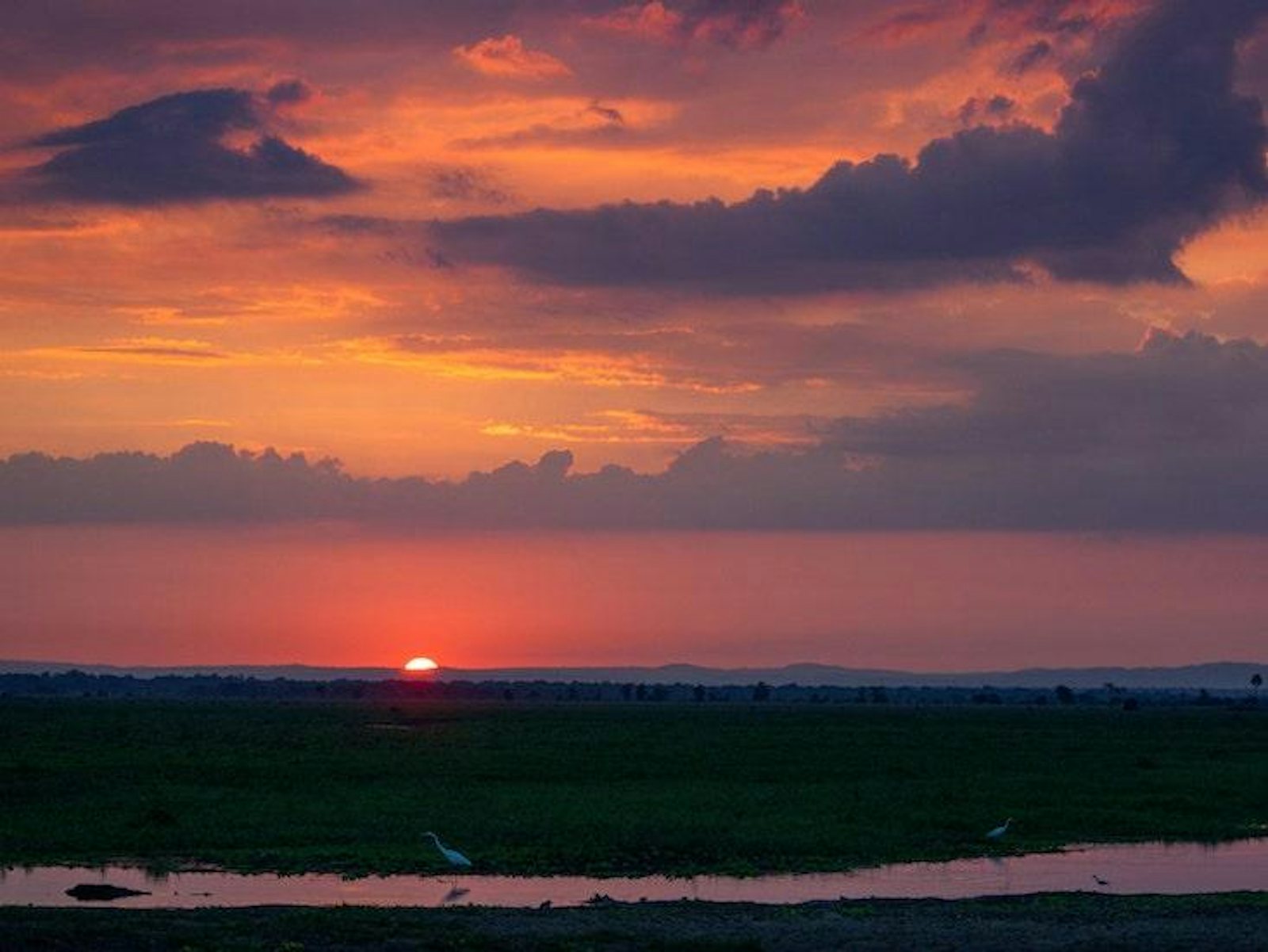
In 2011, the renowned evolutionary biologist E.O. Wilson paid a visit to Gorongosa National Park, in Mozambique. It is one of the few places in the world where you can get a feel for the Great African Rift Valley, humanity’s evolutionary home. After a couple hundred thousand years, the area is largely as it was—mostly the same flora and fauna, sounds and smells. Which is why Wilson titled his book on his time there, A Window on Eternity: A Biologist’s Walk Through Gorongosa National Park. It is a hopeful, triumphant tale: the story of how the area’s natural beauty and mammals were ravaged during Mozambique’s multi-decade civil war and came roaring back to life on the brink of permanent destruction. The revival of the area might serve as a model for future conservation. “Here, then, in one of the remotest parts of Africa,” Wilson wrote, “a great environmental tragedy has been averted just in time.”
During the civil war, the hunger of soldiers stationed in Gorongosa led to the extirpation of the region’s leopards, wild dogs, hyenas, and to a lesser extent, lions. “That’s a tragic thing,” said Robert Pringle, an evolutionary ecologist at Princeton University, in a Princeton news release last week. “But what it does is enable us to study how behavior and ecology changes when the predators are removed.” Pringle co-authored a study on Gorongosa, published this month in Science, that showed that, without any predators, the forest’s herbivorous animals, notably bushbucks, had no one to fear, which allowed them to feast on vegetation with impunity, decimating the landscape. “The elimination of predators broke the rules that ordinarily govern where herbivores go and what they eat, and that has effects all the way through the food chain,” Pringle said. In other words, the researchers write, the absence of predators transformed what were once “landscapes of fear” into “landscapes of fearlessness.”

The study shows the reintroduction of predators alone can spark an ecosystem’s revival. “The first pack of African wild dogs introduced are well settled in, hunt very successfully, and mostly prey on bushbuck—especially those on the open floodplain,” said Paola Bouley, associate director of conservation at Gorongosa National Park, in the Princeton news release. “They just hammer the bushbuck drifting out in the open.” The research, Bouley added, is “exciting confirmation we are on the right track in Gorongosa, focusing strongly on top predator recovery to bring an entire ecosystem back in to balance.” As the researchers concluded, “whereas anthropogenic predator extinction disrupted a trophic cascade by enabling rapid differentiation of prey behavior, carnivore restoration may just as rapidly reestablish that cascade.”
The efforts to restore the park are funded by the Greg Carr Foundation—Carr is an entrepreneur and philanthropist who was inspired by the nature writings of E.O. Wilson. When Wilson went to Gorongosa for a second time, he spent much of his time with Carr. “Greg and I, bound by a common philosophy and broad overlap in the science of wildlife conservation, were by then close collaborators and fast friends,” Wilson wrote in A Window on Eternity.
Not long ago, Nautilus sat down with Carr to discuss his love of Gorongosa. “There’s nothing more rewarding and wonderful than watching a national park, in this case Gorongosa, recover and feeling, wow, you know what, it doesn’t just have to be downhill,” Carr told Nautilus’ John Steele. “We’re not just watching the inevitable destruction of life on Earth. No. We can take a damaged, distressed ecosystem and bring it back to health. That’s an exciting feeling and that gives you a sense of, wow, humans, we could be okay on this planet for thousands of years if we understand what it means to live sustainably.”
Watch our whole interview with Carr here.
Brian Gallagher is the editor of Facts So Romantic, the Nautilus blog. Follow him on Twitter @bsgallagher.


























